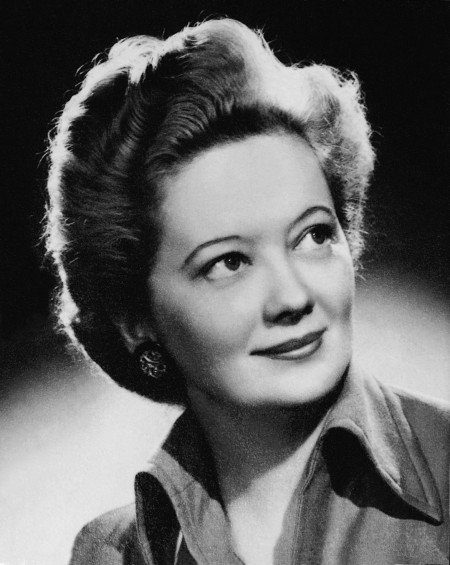
19 June 1913, Budapest –28 October 1973, Budapest
Mária Gyurkovics was a student at the Academy of Music for only two years: she studied with Imre Molnár in the academic years 1935/1936 and 1936/1937. She debuted in the Budapest Opera in 1937 as Gilda with such a great success that she was immediately contracted as a soloist. She took the heritage of Erzsi Sándor and Lujza Szabó soon and became the coloratura soprano of the theater without a rival. Her performances were characterized by a wonderfully warm voice material, virtuosic technique and refined lyric temperament. At the same time she could also personate the characters of the roles with her nuanced voice. The lack of a dramatic prima donna made the life of the Opera difficult after the war. Mária Gyurkovics having been deepened and matured in acting and drama returned back there.
The Barber of Seville became a bravura opera again in Budapest following Gyurkovics' performance. The Budapest renaissance of Donizetti was linked to her name. The Lucia di Lammermoor was revived especially for her sake after being not played for decades and the Don Pasquale became a success with her – Maleczky's gorgeous Pasquale and Gyurkovics' naivety pretending cleverness made that performance one of the greatest performances of the 1950s.
It is a fact though that the naturalist opera staging of the period and the Hungarian Donizetti-Renaissance hallmarked by Gyurkovics differed profoundly from the rediscovery of the nineteenth-century Italian opera that was ‘fashionable' Europe-wide. The latter changed the traditional repertoire of the world's stages with the participation of Maria Callas approximately at the same time with the Hungarian events. The acting style in Hungary resembled a nineteenth-century left behind, rather than a nineteenth-century rediscovered and reinterpreted. Hungarian performances did not even try more than one or two revivals. (The revival of L‘elisir d'amore in 1964, conducted by Gardelli had still Gyurkovics as its primary female main character; but that Donizetti-‘opportunity' arrived a decade late for her.)
Gyurkovics' repertoire included all the primadonna-roles like Gilda, Constanze, Queen of the Night, Zerlina, Lucia, Oscar, Rosina and Norina. Her performances of the Mozart-roles were connected to the period hallmarked by the name of Klemperer, and Klemperer directed the renewal of The Tales of Hoffmann in 1949, too, that was also and important professional station for the singer. Aladár Tóth renewed the Lakme for the sake of Gyurkovics in 1952. The audience could witness one of the greatest performances of the singer in the Hunyadi, staged in connection with the Erkel-cult in 1954-55. Instinctive lyricism permeated her role of Maria Gara, in the farewell scene of which she conjured unforgettably touching moments on the stage.
She sang Sophie and Martha from the lyric roles. She gave a brilliant cabinet-performance of the clumsy teacher in the Albert Herring at the end of her career, the audience discovered then the comic side of the great coloratura star. Due to a serious illness she retired from the stage of which she was a decisive personality in style and repertoire for long decades. For example the primadonna of A kérők [The Suitors] by Tibor Polgár premiered in the spring of 1955 sings in a true Gyurkovics-style, because the composition that far met the protocol rules of the era presupposed inherently the contribution of the leading vocal team of the era.
She, who was awarded the state prizes Kossuth Prize and Outstanding Artist Award, sang in oratorios with also an enormous success, performed in almost all the big cities of Europe and the memory of her work is preserved by several radio-, television- and disc recordings. There can be found a recording-fragment of the Rigoletto from 1955 among them with Mária Gyurkovics, Sándor Svéd and the conductor was Francesco Molinari-Pradelli.
T. A.


